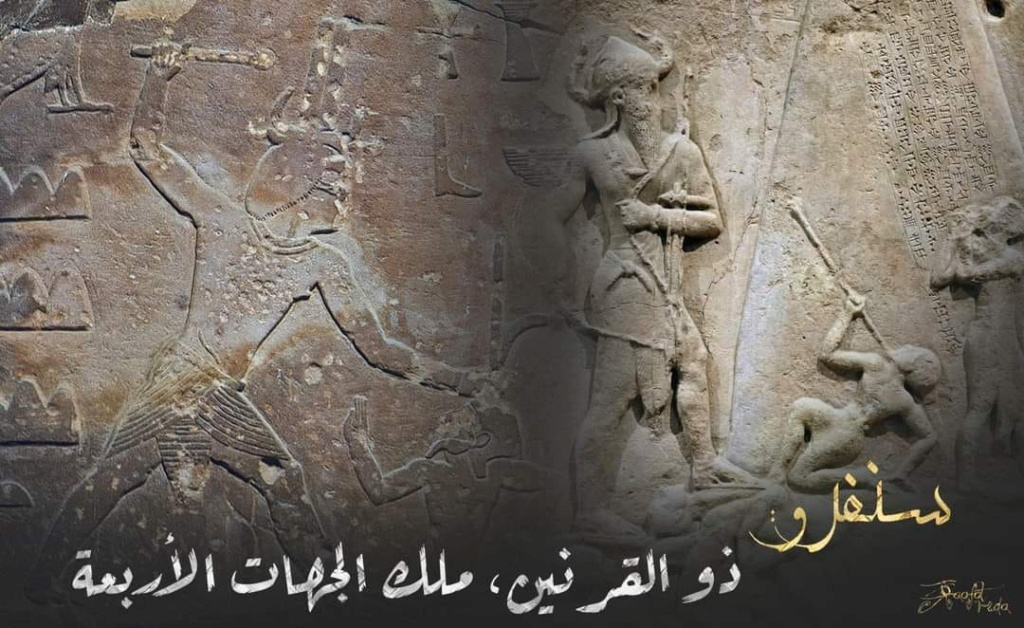Sneferu: Dhu al-Qarnayn, king of the four directions

The first king in human history to appear wearing the horns as a warrior was King Sneferu of Egypt (the Fourth Egyptian Dynasty), who ruled in the twenty-seventh century BC. The king appeared in several paintings with a crown made of horns, including a painting under the museum inventory number JE 38568 in the Egyptian Museum. In Cairo, it was found in the Valley of a Cave in Sinai, and it shows the king attacking an enemy whose features appear to be Asian. This is a stereotypical image that we find echoed in the Naqada era and in the famous Narmer painting.
Then another Egyptian king appears after him wearing two horns, King Sahure (Fifth Dynasty), who ruled in the twenty-fifth century BC. The crowns of kings varied to appear with two or even four horns.
The Pyramid Texts, the oldest complete religious texts in human history, indicate that the four centuries symbolize the four directions. In paragraph 469 we read the following:
“Hail to you, O Bull of Ra, you who have four horns! Your horn is in the west, your horn is in the east, your horn is in the south, your horn is in the north!”
That is why the horns are considered a symbol of the four corners of the Earth and its cardinal directions. The king of Egypt, Sneferu, was the first to wear the two horns, and the four horns symbolized the four directions, and the king is the king of the four directions and the one who has sovereignty and authority over them. These are the badges and titles that Naram-Sin (twenty-third century BC), the king of Akkad in Mesopotamia, three centuries after Sneferu, took, so we see him in his obelisk. He is famous for weaving in the style of Sneferu, encircling his enemies and wearing the crown of the two horns. He also took the title of King of the Four Directions.
The era of Naram-Sin in Mesopotamia witnessed the adoption of several Egyptian ideas related to kingship. Egypt, its sister Mesopotamian country, inspired some aspects of its royal experience, including titles and depictions of the king conquering his enemies, and even going beyond the issue of naming the years that followed the events or counting the number of the defeated.
The Swiss archaeologist Oscar Kaelin mentions in his book (“The Egyptian Model”: Adoption of Innovations in Mesopotamia in the Third Millennium BC), published in 2006 [Oskar Kaelin, « Modell Ägypten »: Adoptation von Innovationen im Mesopotamien des 3. Jahrtausends v. Chr. ]) The following (pages 130-131):
“By adapting the Egyptian model of killing the enemy, the ancient Akkadian king acquired the “image” of the victor over the enemies, supported by new elements in the royal title. All of these appearances did not originate in the traditions of Mesopotamia, but they are an ancient and huge model in Egypt.”
• About “Egypt as a Model of Monarchy in Mesopotamia (the Dawn of the Third Dynasties B and the Akkadian Period), see the following link: https://www.facebook.com/.../a.108292551.../414409283982225/
Source: websites

